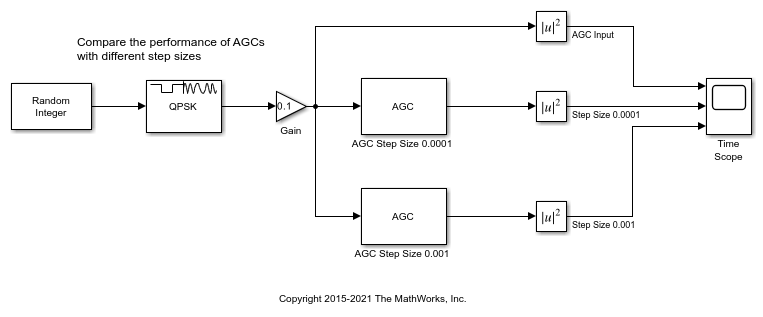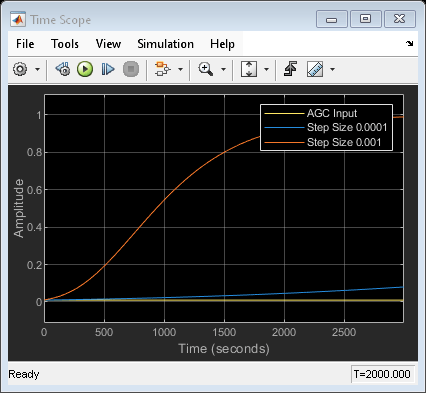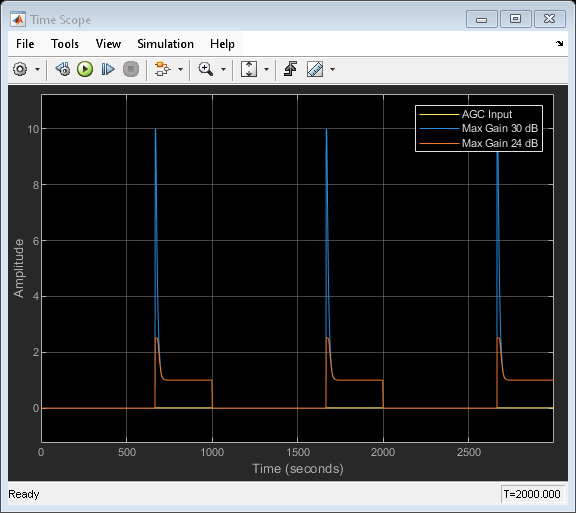AGC
Adaptively adjust gain for constant signal-level output
Libraries:
Communications Toolbox /
RF Impairments Correction
Description
The automatic gain controller (AGC) block adaptively adjusts its gain to achieve a constant signal level at the output.
This icon shows the AGC block with the optional Px port.![]()
Examples
Ports
Input
Output
Parameters
Block Characteristics
Data Types |
|
Multidimensional Signals |
|
Variable-Size Signals |
|
More About
Tips
This block is designed for streaming applications.
If the signal amplitude does not change within the frame, you can simulate an ideal AGC by calculating the average gain desired for a frame of samples. Then, apply the gain to each sample in the frame.
If you use the AGC with higher order QAM signals, you might need to reduce the variation in the gain during steady-state operation. Inspect the constellation diagram at the output of the AGC during steady-state operation. You can increase the averaging length to avoid frequent gain adjustments. An increase in averaging length reduces execution speed.
Extended Capabilities
Version History
Introduced in R2013a






